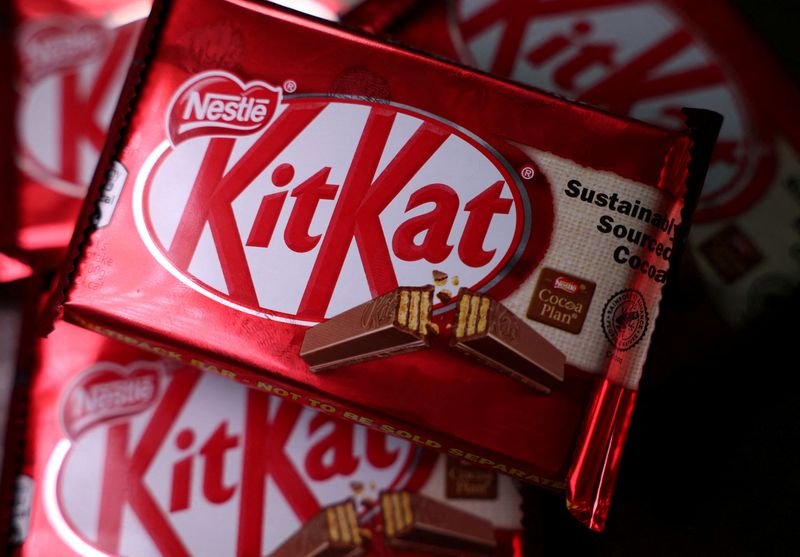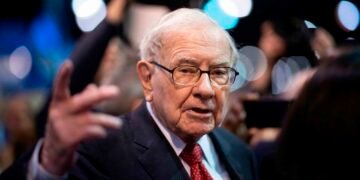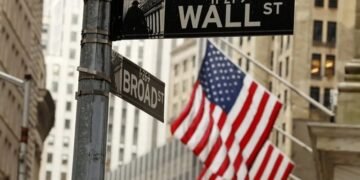Nestle’s plans under new chief executive Laurent Freixe to restructure and focus on its top brands have been welcomed by investors, but executing a turnaround strategy against a backdrop of weak consumer demand will be a difficult task.
After replacing Mark Snyder as chief executive last month, Freixe on Thursday laid out his plans to overhaul the executive board, revive Nestle’s 31 core “billionaire brands”, make prices competitive again and regaining market share through innovation and marketing.
He relayed his strategy to investors as Nestle – owner of brands including Nescafe, Kit Kat, Sanpellegrino and Purina pet food – cut its full-year sales outlook after weaker-than-expected organic sales growth during the nine months.
Freixe said in a call to investors that Nestle is operating in “an environment characterized by weakening consumer demand,” particularly in North America and Europe, the company’s biggest markets.
In the first nine months of the year, the Swiss group was only able to raise prices by 0.6% in North America, where its products are sold at retailers from Walmart (NYSE:WMT) to Kroger (NYSE: KR).
In Europe, grocers are becoming increasingly difficult to deal with and several products were pulled from shelves in the third quarter, the company said.
“Freiche clearly has work ahead of him to improve these weaknesses
trends,” said Bernstein analyst Callum Elliott. “Is this weakness really execution struggles for Nestle…or are these growth challenges simply a reflection of the weak growth backdrop across Nestle’s categories and an ongoing strategic dilemma facing the world’s largest food company?”
It has been a tumultuous two years for the industry as the end of the Covid-19 pandemic caused a supply chain crisis and skyrocketing commodity prices followed by a spike in energy prices following Russia’s invasion of Ukraine and disruption due to attacks on container ships in the Red Sea.
Since early 2022, when Schneider split Nestle into five geographies in what it called a market-led approach, Nestle shares have fallen by about a third. Freixe will now reduce the number of regions to three to simplify the structure.
“Freixe performed well and made the right noises,” said Barclays analyst Warren Ackerman. “However, the US, Europe and Latin America are under pressure, so this is not an easy stage to execute a turnaround.”
‘HE IS HE’S A LIFTER’
Snyder was ousted from Nestle in August with little warning after several consecutive quarters of weak volume growth, with overall revenue supported by high pricing to cover rising costs. The group has begun to cut back on marketing and innovation, despite investor concern.
Shoppers turned to cheaper brands, and until this year, when Nestle began to slow price increases, many of its brands weren’t innovative or well-marketed enough to win back sales.
Investors and analysts, however, appear encouraged by Freixe’s recovery plans, with Nestle shares up around 2% on Thursday, despite the group cutting its full-year outlook.
“He’s a lifer, isn’t he?” said Ben Lofthouse, Janus Henderson’s head of global equity income. “I think he’s been at Nestle for 40-plus years. He just got back from Latin America to try and steady the ship.”
Vontobel analyst Jean-Philippe Bertschy believes there will be brand sales in the future.
Nestlé, which also makes Quality Street chocolate and Haagen Dazs ice cream, has focused on its “billionaire brands” – its 31 biggest brands – in recent quarters.
The rhetoric is similar to that of rival food and consumer goods group Unilever (LON:ULVR), which, under CEO Hein Schumacher, is focusing on its 30 most important brands out of around 400. In Unilever’s case, the strategy has sparked speculation that the company may struggle to sell unwanted brands – a task that may be more difficult for Nestlé, which has over 2,000 brands. The company’s sales growth this year has been driven by coffee, pet care and confectionery, in which it has innovative new products.
The market share of Nestlé’s top brands “improved” in the third quarter, Freixe said, although “the overall market share of the whole group was largely at the level of the first half.” Fixing this is a “key priority,” he added.
Investors need to be patient, said Barclays’ Ackerman. Next year will be “a transition year with the second consecutive year of negative earnings growth,” he said.
“Investors need to look beyond 2025.”
At Bro In Finance, we are committed to helping traders navigate the complexities of the forex market. Our in-depth analysis, expert insights, and advanced tools empower you to make informed decisions and achieve your trading goals. Whether you’re a beginner or an experienced trader, Bro In Finance is your trusted partner in mastering the forex market. Visit our website for more trading tips and strategies to enhance your trading experience.
Check out our on Best Forex Brokers to know more about this topic
Check out the most crucial steps that you need to take when choosing your forex broker
Have you heard about an amazing Broker Platform called “AVATRADE“? We at Bro In Finance do recommend this amazing broker.
Check out here to figure out the best funded trader program: Which Funded Challenge is Best
Reference;
Reuters (2024) Analysis-Nestle CEO Freixe’s turnaround plan faces challenge from weak consumer By Reuters, Investing.com. Investing.com. Available at: https://www.investing.com/news/stock-market-news/analysisnestle-ceo-freixes-turnaround-plan-faces-challenge-from-weak-consumer-3671003 (Accessed: 18 October 2024).






